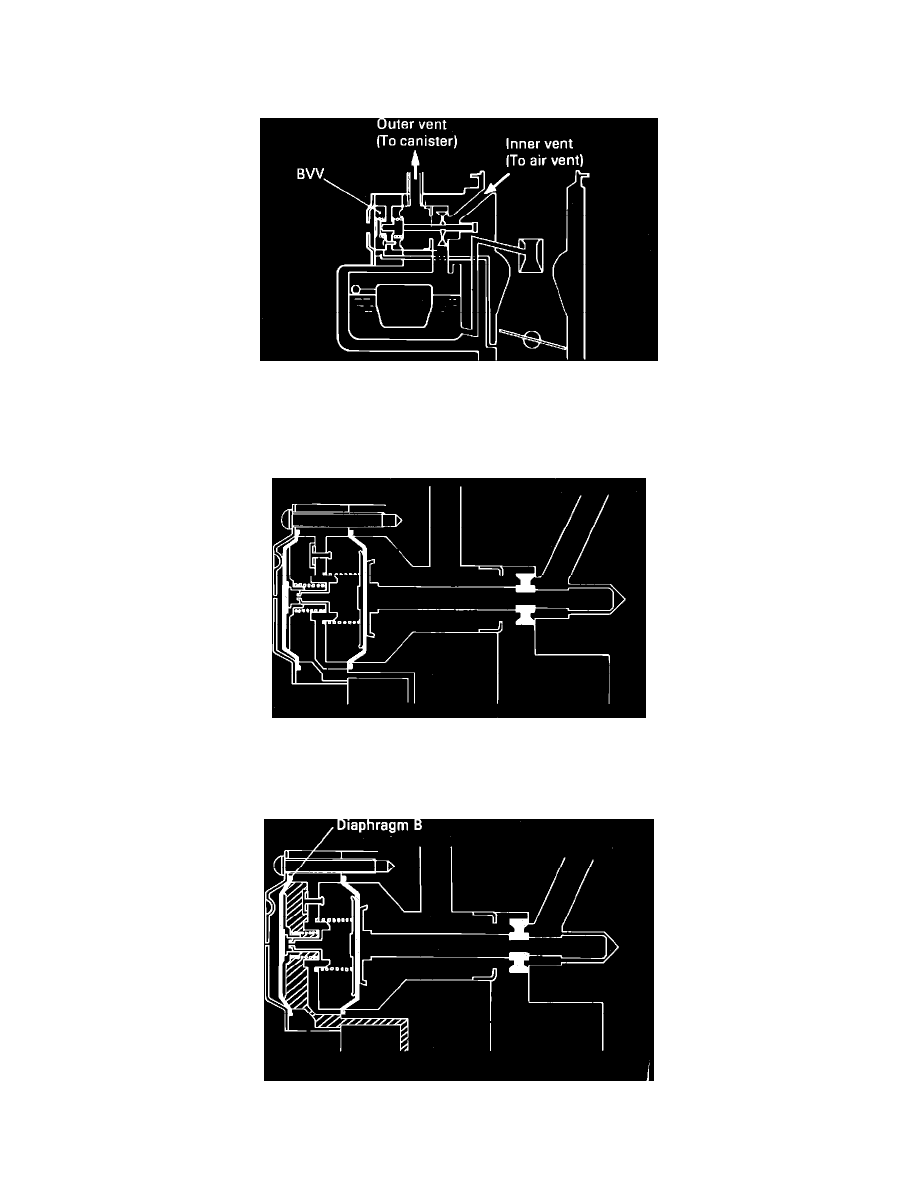Pickup 2WD L4-155 2555cc 2.6L SOHC VIN E 2-bbl (1988)

Typical charcoal canister
While the engine is not in operation fuel vapors generated inside the fuel system are absorbed and stored in the carbon canister, Fig. 15. While the
engine is running fuel vapors absorbed in the canister are drawn into the intake manifold through the purge-control valve, and an orifice.
Fig. 32 Bowl vent valve
BOWL VENT VALVE
The bowl vent valve (BVV), Fig. 32 controls the venting of the carburetor float bowl.
Fig. 33 Bowl vent valve operation (engine off)
1.
While the engine is not running spring force closes the inner vent passage, Fig. 33 and fuel vapors flow to the canister through through the outer
vent passage.
Fig. 34 Bowl vent valve operation (vacuum > 1.2 in. Hg.)
2.
When the engine is running and intake manifold vacuum reaches more than 1.2 in. Hg (4 kPa, 0.6 psi), diaphragm B, Fig. 34 is pulled to the right
